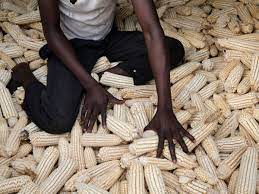Zimbabwe is ready to resume grain exports this year with initial exports of 40 000 tonnes of grain to East Africa from the substantial surpluses grown by the farmers as the Second Republic’s agriculture policies continue to guarantee good harvests.
Wheat exports are also being considered after Zimbabwe attained self-sufficiency for the first time last year and should be reaping a significant surplus over the next few months.
Zimbabwe used to be a reliable source of export maize but in more recent years, until the Second Republic’s agricultural expansion policy kicked in, had been a maize importer. Some wheat at least had to be imported each year until last year’s harvest was delivered, ending imports.
The huge expansion in harvests has not only produced exportable surpluses of grain, after all local consumption needs are met both by farmers and the nation, but required carryover stocks and reserves to cope with a serious drought, but is also creating a very large rural middle class of farmers who are earning ever larger incomes, a vital requirement if Zimbabwe is to achieve upper middle income status by 2030.
This season Zimbabwe has so far harvested more than 2,3 million tonnes of maize and 300 000 tonnes of traditional grains and there is carryover stock of 300 000 tonnes of maize from the previous season, so exports now become possible again.
In the coming summer cropping season, the Government is targeting a cereal production of 3,7 million tonnes to ensure national food and nutrition security. The target cultivated areas for the major crops has been increased by only 10 percent since the major thrust of the ministry is to increase production per unit area, rather than drastically expand the cultivated area.
The agriculture sector has already hit the initial 2025 target of becoming an US$8,2 billion industry. This target was achieved in 2021, when the industry grew by 36,2 percent. Zimbabwe needs around 2,2 million tonnes of maize a year, both for family and consumption of the farmers who grow it and for the rest of the country, which comes out of the grain sold by farmers, almost all to the Grain Marketing Board.
Speaking during the Mashonaland Central Provice Agricultural Show in Bindura last Friday, Lands, Agriculture, Fisheries, Water and Rural Development Permanent Secretary Dr John Basera said maize exports by the country is a milestone for Zimbabwe, which was recently a food importer owing to persistent droughts.
“After the promulgation and indeed the rolling out of the agricultural recovery growth plan we are projecting a surplus this year in 2022/ 2023 season and we are projecting a harvest of 2,9 million tonnes of summer cereals. These are against an annual requirement of 2,2 million tonnes and leaving a surplus of around 600 tonnes. We are at the prospects of exporting.
We are also targeting central Africa. We have enquiries in countries in central Africa and we will be exporting over 40 000 tonnes of cereals or maize to East Africa this year. We are also looking at the prospects of exporting wheat this year.”
The country is moving ahead on several fronts to ensure that land reform becomes a resounding success by making sure farmers have the inputs and backing to push production to new heights, far higher than what was produced before the reforms.
Now land reform, which gave a lot of farmers access to land, has been matched with the agriculture and food systems transformation strategy which ensures they can use that land effectively to increase production. The strategy is a composite plan of action drawn from the agriculture recovery and livestock growth plans.
Agricultural transformation is on course with the Government introducing Pfumvudza, Command Agriculture, contract farming and corporate farming as ways to boost the agricultural and industrial revolution which saw Zimbabwe’s transformation taking less than 20 years after the introduction of the land reform.
Dr Basera indicated that wheat and maize did well as the agriculture recovery plan seeks to reverse the negative trends in terms of food production in Zimbabwe.
“This is actually happening for the first time in many many years after the land reform programme. This signifies that the land reform programme was a necessity and is indeed a big success,” Dr Basera.
Dr Basera applauded Mashonaland Central for contributing quite significantly in food production.
“Mashonaland Central is number 2 in food production while Mashonaland West is number 1 This year they also contributed significantly as well maybe up to 15 up to 20 percent of the total hectarage achieved this year,” he said.
Zimbabwe is targeting 3 040 000 hectares for strategic crops with an expected yield of 3 782 658 tonnes. Good rainfall patterns received this season was the major contributor of bumper harvests. Zimbabwe Indigenous Women Farmers Association Trust Mrs Depinah Nkomo said this year farmers produced a good harvest in maize and other crops compared to last year, adding that the rainfall received was normal in most areas.
“I believe that next season we are going to produce the best results again on our crops, especially maize,” she said.
“Most farmers planted the majority of crops in early November and most of these crops matured well. This also contributed positively to the growth of our crops. Farmers planted on time and we received good rainfalls. We were looking towards exports. This showed that farmers worked well and the Government showed its commitment by providing inputs and other services vital for crop production. We thank the Government for its contribution,” she said.
Zimbabwe Commercial Farmers’ Union (ZCFU) president Dr Shadreck Makombe said a maize bumper harvest was inevitable because of good rains received and the preparedness of farmers.
Tobacco Farmers Union Trust vice president Mr Edward Dune said the future of maize production was great following the participation of private buyers. “We are optimistic that next year we can achieve the target if private players also come to partner the Government in farming.
“This is critical for our country because food security is an important part of our lives. We must stock up our reserves.”
Mrs Miriam Mapfiro of Bindura thanked the Government for timeous distribution of Pfumvudza inputs adding that this has largely benefited vulnerable groups who struggled to make ends meet.
“Government has rescued many households. We are grateful for this support. Getting inputs on time meant a good harvest ,” she said.
Another farmer Mr Takudzwa Munyeya of Muonwe in Bindura said Government’s commitment towards helping farmers needs to be appreciated as it symbolises great hope. He said the massive roll out of the Pfumvudza/Intwasa programme had increased the country’s food self-sufficiency levels and food security.
“This is a commendable effort made by the Government. We were given inputs on time, that’s why this time we achieved a bumper harvest,” he said.
Source Byo24News












